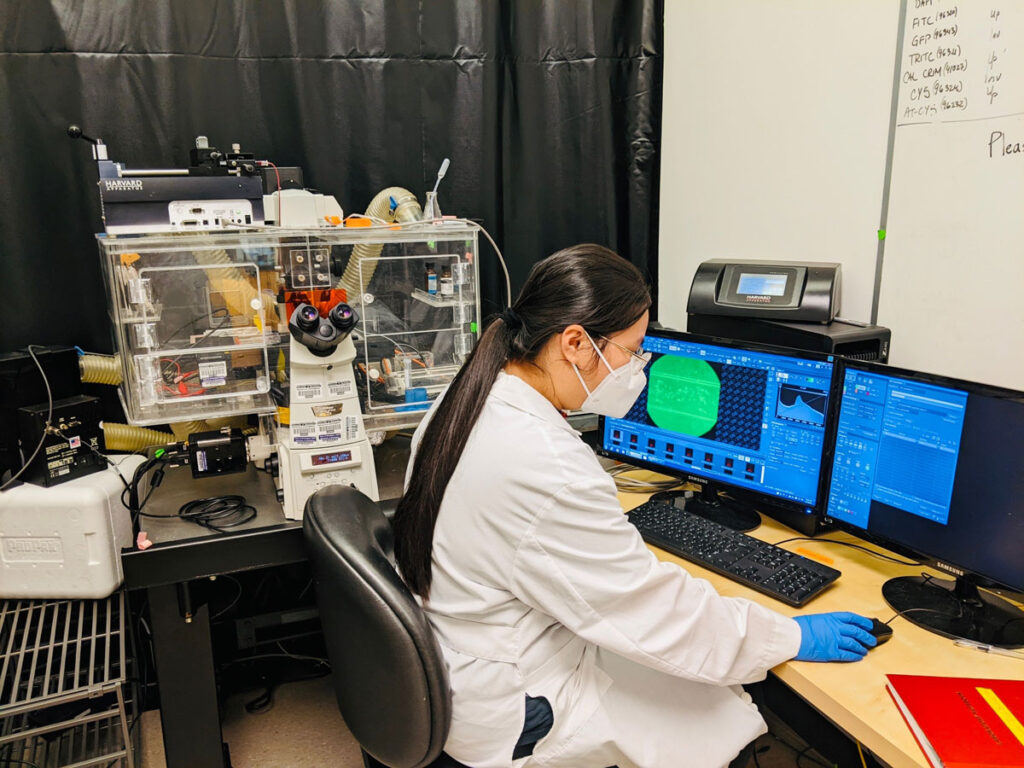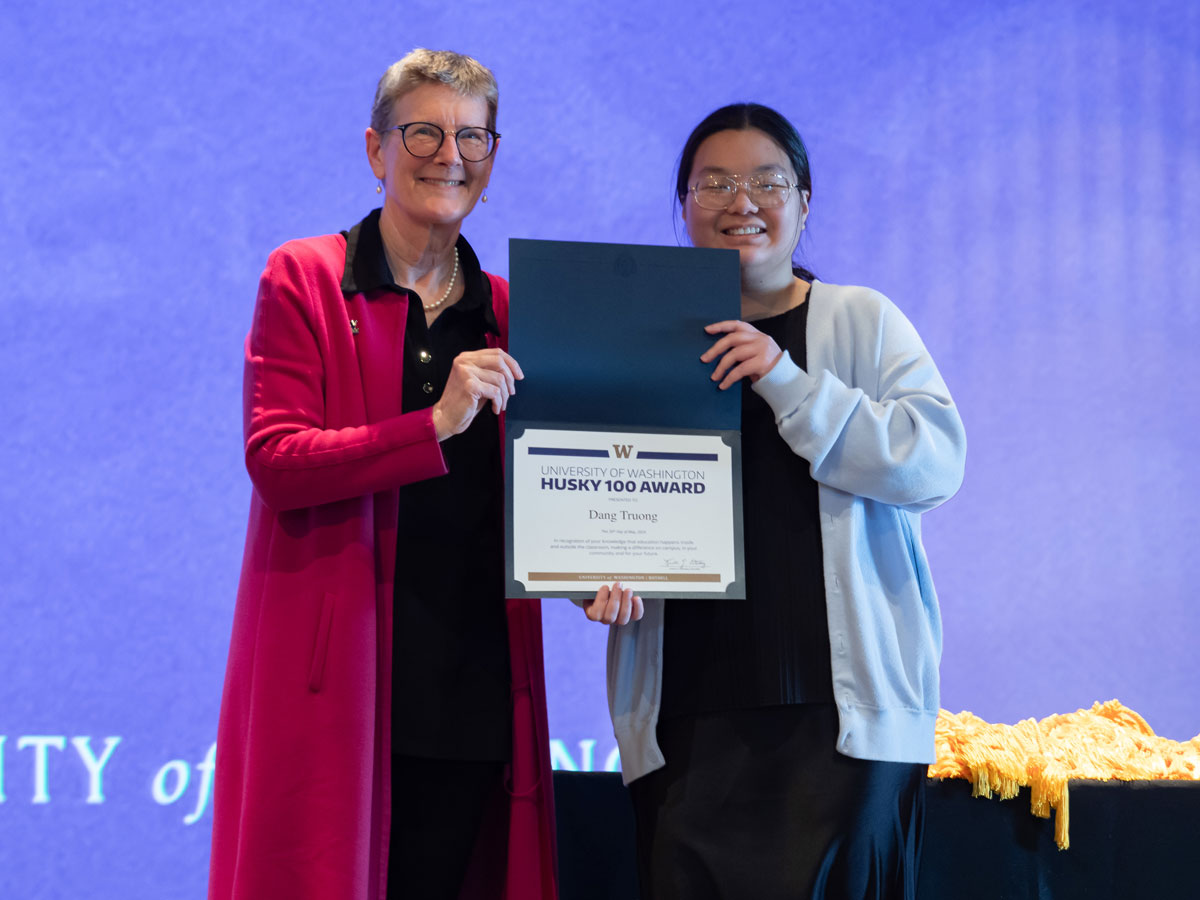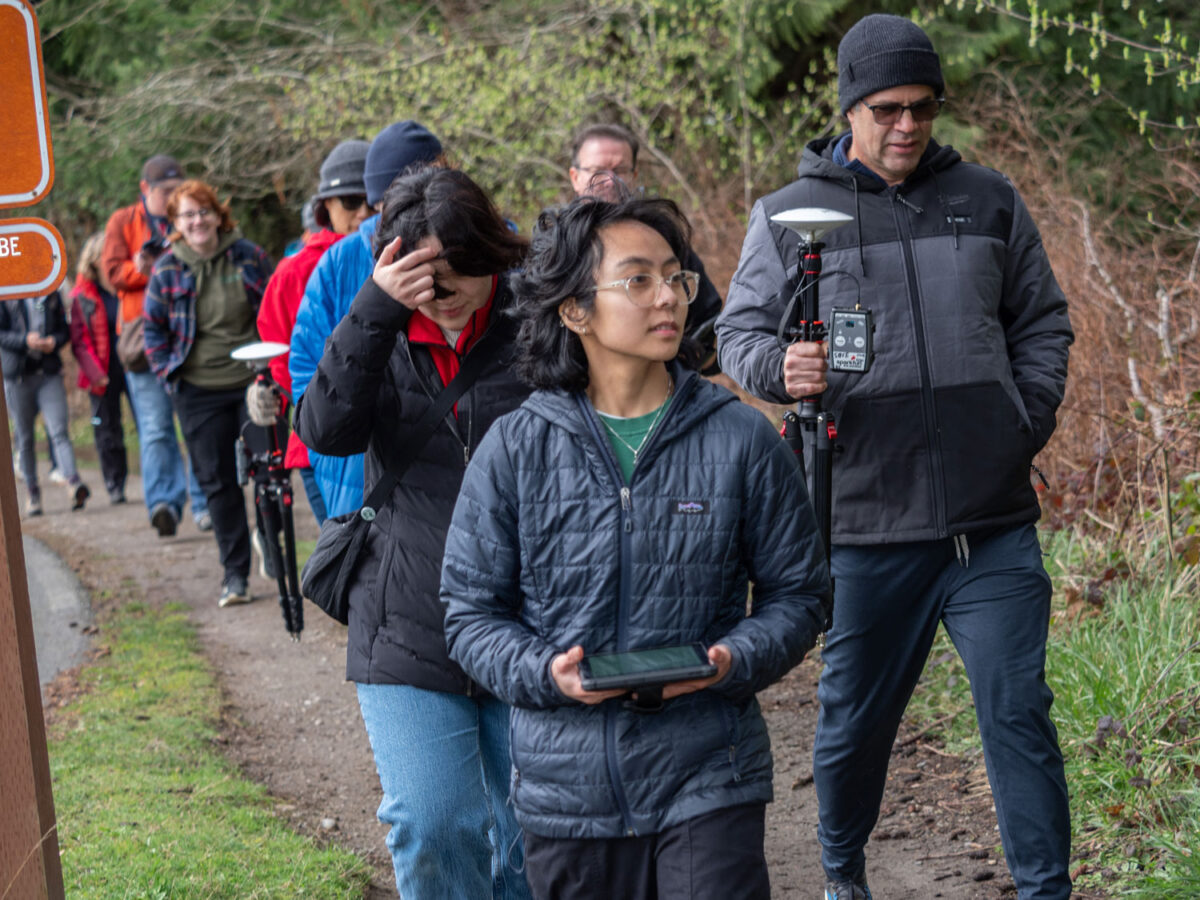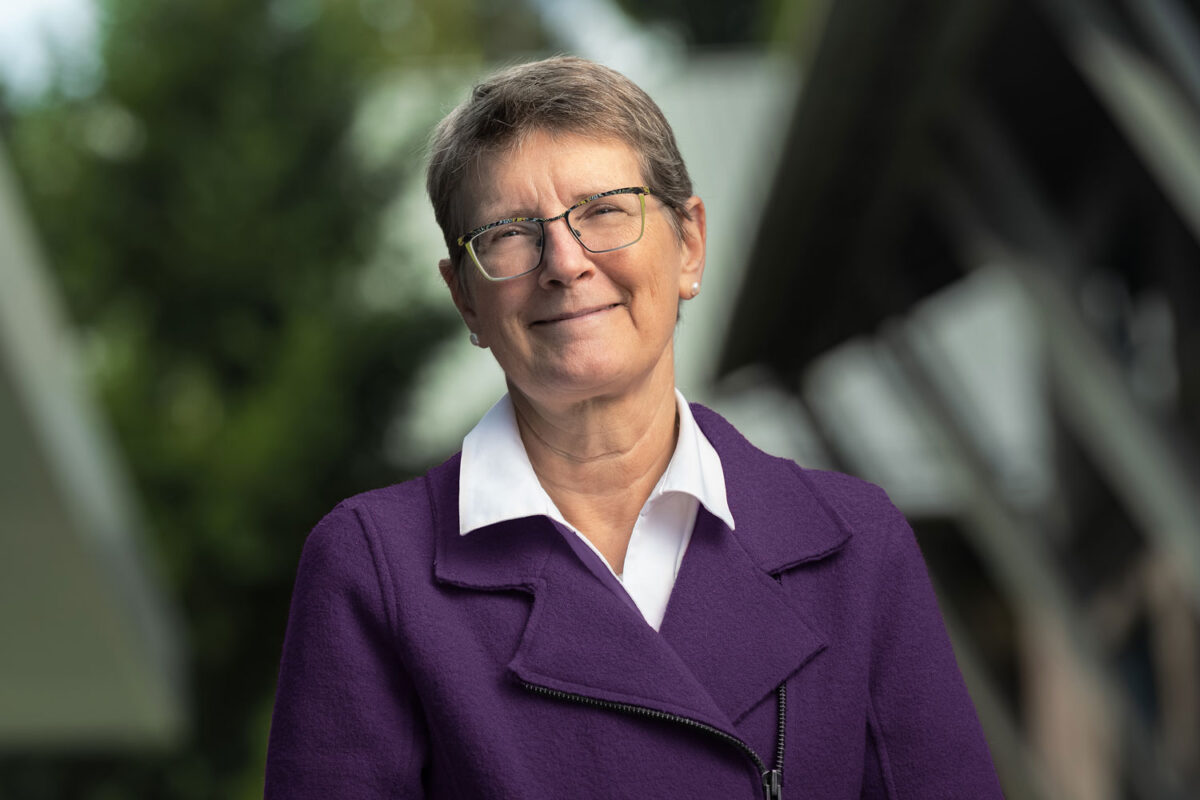When people think of research, they may conjure up images of white coats, microscopes and safety goggles. And when they think of the researchers themselves, they may imagine eccentric geniuses who can seemingly solve the unsolvable.
“That was definitely my perception of research before coming to college,” said Dang Truong (Biology ’24). “Coming from a working-class, immigrant family, research was an unfamiliar and unthinkable option for me. I didn’t think I would be able to pursue or even enter the field since it was so high up.
“I also never met anyone in my world,” she said, “who was a researcher.”
That changed when Truong came to the University of Washington Bothell: “I realized that my professors were researchers themselves and that there were more opportunities and careers in the field than I had initially thought.”
Shot in the dark
Inspired, Truong decided to take a leap of faith and dare to pursue her scientific research interests. The decision paid off tenfold as her work has been supported by a fellowship in the Institute for Stem Cell & Regenerative Medicine’s summer research program, the Mary Gates Research Scholarship and a NASA Space Grant Consortium Scholarship.
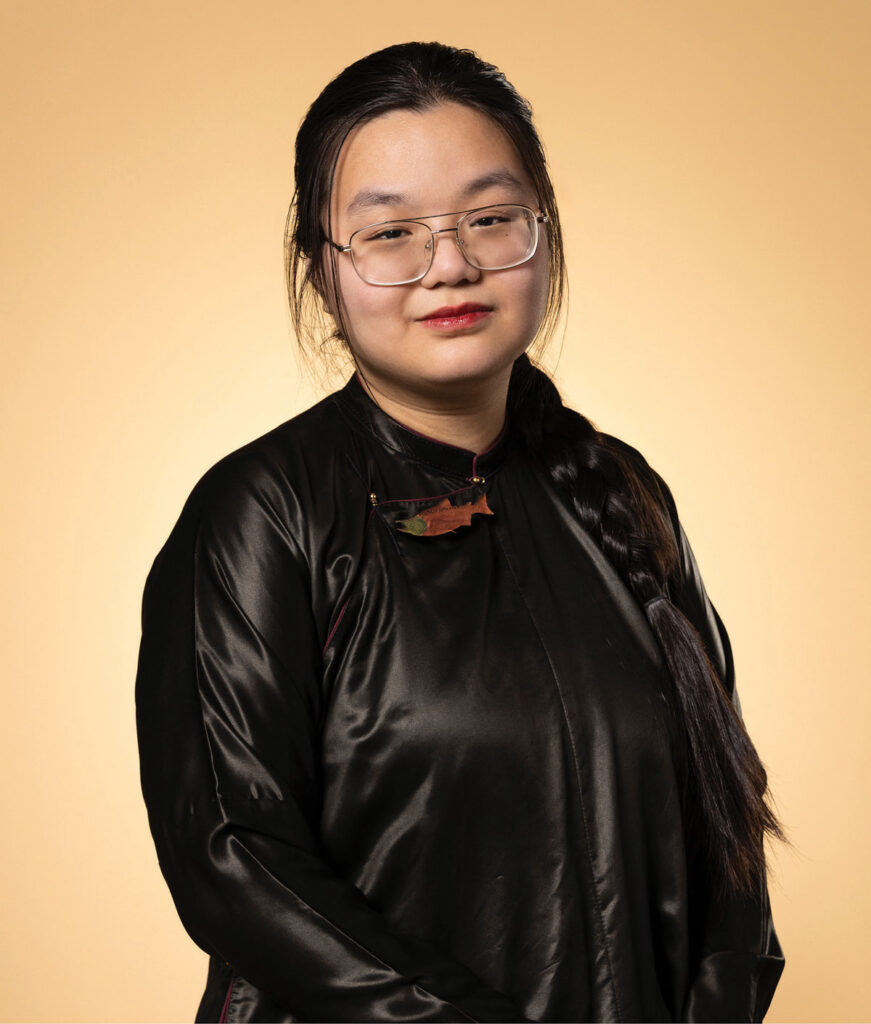
“Dang is a first-generation college student who has expressed to me on more than one occasion that participating in research is a dream come true,” said Ava Obenaus, Truong’s graduate school mentor through the ISCRM program. “She consistently goes above and beyond what is expected of an undergraduate researcher. It has been an absolute pleasure to play a role in her development as a scientist.
“One of the most striking things about Dang,” she added, “is how grateful she is to participate in research. Her gratitude and kindness are truly unparalleled, and it makes her an absolute joy to work with.”
In recognition of Truong’s academic achievements, she has been named one of the 2024 Husky 100 honorees. Every year, the University of Washington recognizes 100 undergraduate and graduate students from the Bothell, Seattle and Tacoma campuses who have made the most of their time at the UW — inside and outside the classroom. These Husky 100 students actively connect the dots between what they learn in their studies with what they want to do to make a difference on campus, in their communities and for the world. Truong, who also minored in Physics, is one of six honorees from UW Bothell.
Learnings in the lab
As a first-generation student who moved to the United States from Vietnam less than 10 years before starting college, Dang initially struggled to find research opportunities.
“I didn’t know where to look and found it challenging to find programs or ways to get involved in the field,” she said. “I almost gave up because my family was struggling financially, and I thought that becoming a researcher, given my situation and financial status, would be an impossible goal.
“I reached a point where I felt utterly defeated. It was in that moment that I got a notification that had a link to apply to the ISCRM Summer Research Program.”
The timing was somewhat miraculous. Truong admits that if she hadn’t gotten that message at just the right time, she likely would have given up and wouldn’t be where she is today. “It completely changed my life,” she said.
Truong participated in the program in 2022 and spent her summer in the Sniadecki Lab. There, she worked on a research project alongside Dr. Nathan J. Sniadecki, associate director of the ISCRM, to study platelet biomechanics using microfluidics. Truong prepared microfluidic devices, performed blood experiments using microfluidic devices on a microscope and analyzed the data of contractile forces produced by aggregated platelets.
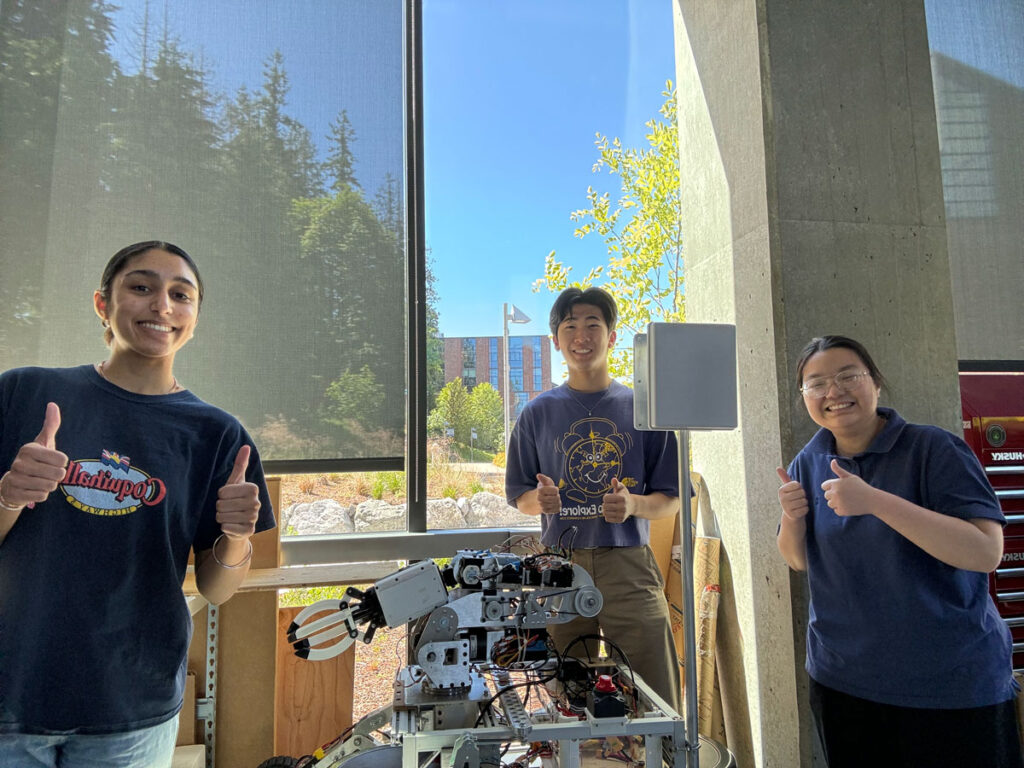
Excellence in experimentation
Still, Sniadecki believed that this was not enough to truly challenge Truong and so gave her two additional projects. One involved troubleshooting the fabrication process for microfluidic devices and the other was to develop a protocol for fluorescent labeling platelets for microscopy experiments.
“She immediately took ownership of both projects,” Sniadecki said. “For the microfluidic fabrication, she identified the key problems with our fabrication method and developed a new process that made the entire process more efficient, eliminating an entire day from our fabrication time.
Her perseverance and attention to detail made a real impact, he noted. “To fluorescently label the platelets, Dang had some brilliant troubleshooting ideas and has been very patient with the process. With each experimental iteration, she wrote a detailed protocol and kept notes that could be easily understood by future researchers. She was excellent at identifying what changes should be made from experiment to experiment.
“Her dedication and persistence paid off because we got this experimental protocol working during the fall quarter.”
She identified the key problems with our fabrication method and developed a new process that made the entire process more efficient, eliminating an entire day from our fabrication time.
Dr. Nathan Sniadecki, associate director, Institute for Stem Cell & Regenerative Medicine
A path and a purpose
Truong’s excellence in the Sniadecki Lab led to two prestigious scholarships: the Mary Gates Research Scholarship and the NASA Space Grant Consortium Scholarship. These scholarships allowed Truong to continue her work with Sniadecki and gave her additional training in laboratory processes, communicating scientific ideas, technical writing, data analysis and interdisciplinary teamwork.
“I am extremely grateful for the financial support awarded to me through these scholarships,” Truong said. “Without them, I never would have been able to do this research.”
Outside of the lab, Truong was just as committed to staying involved and using her talents within the larger UW Bothell community.
She joined the Biology Club, where she served as president from 2021 to May 2024. In this role, she established tours of the local wetland and created Biology Talks to increase engagement of students and faculty.
Truong also joined the Trickfire Robotics club, bringing fellow Biology Club members in to help the robotics team develop a life-detection system for identifying microbial life from soil samples on the Mars rover.
“The clubs, classes, conversations and inspiring faculty figures helped me realize my passion for research — and the opportunity and mentorship from the ISCRM summer research program have all led me to this path,” Truong said. “My next step will take me to graduate school.
“I know I have a long journey ahead of me, and I am so excited and grateful to see what’s ahead.”
